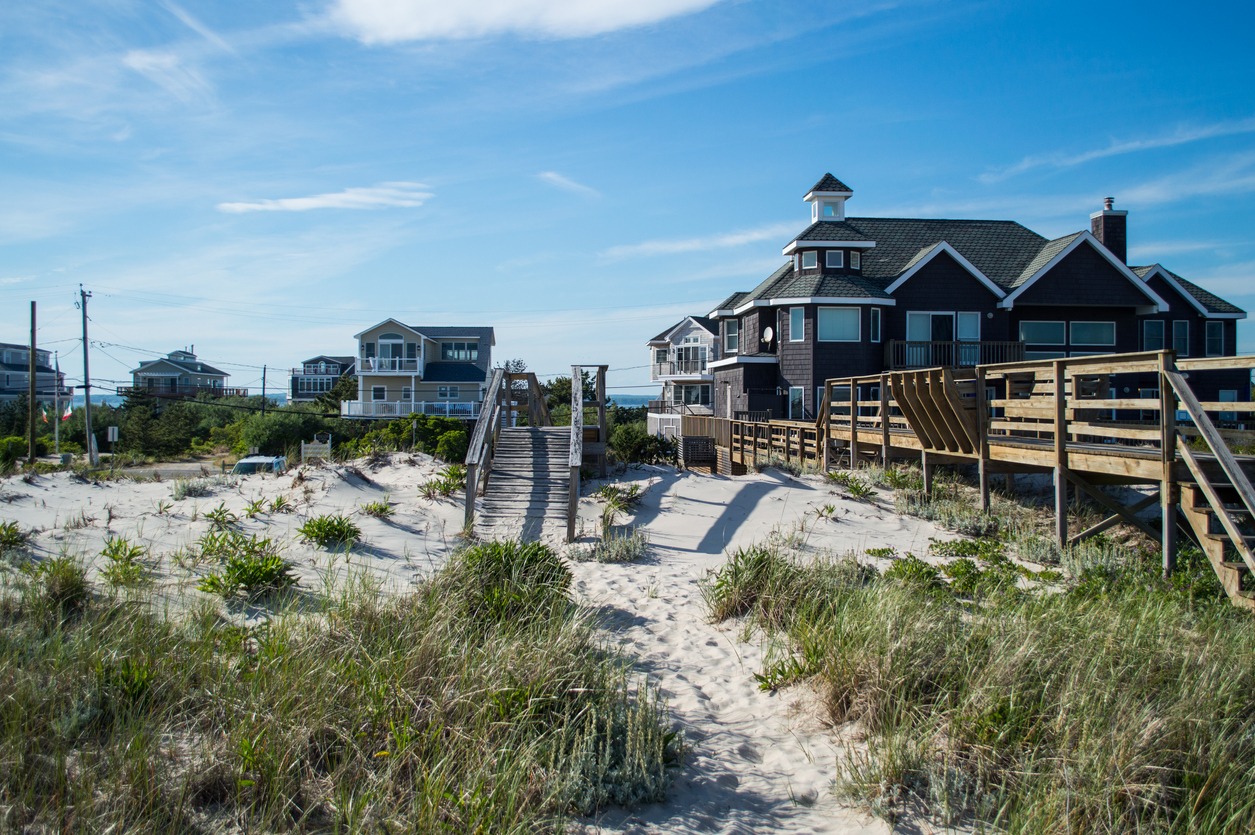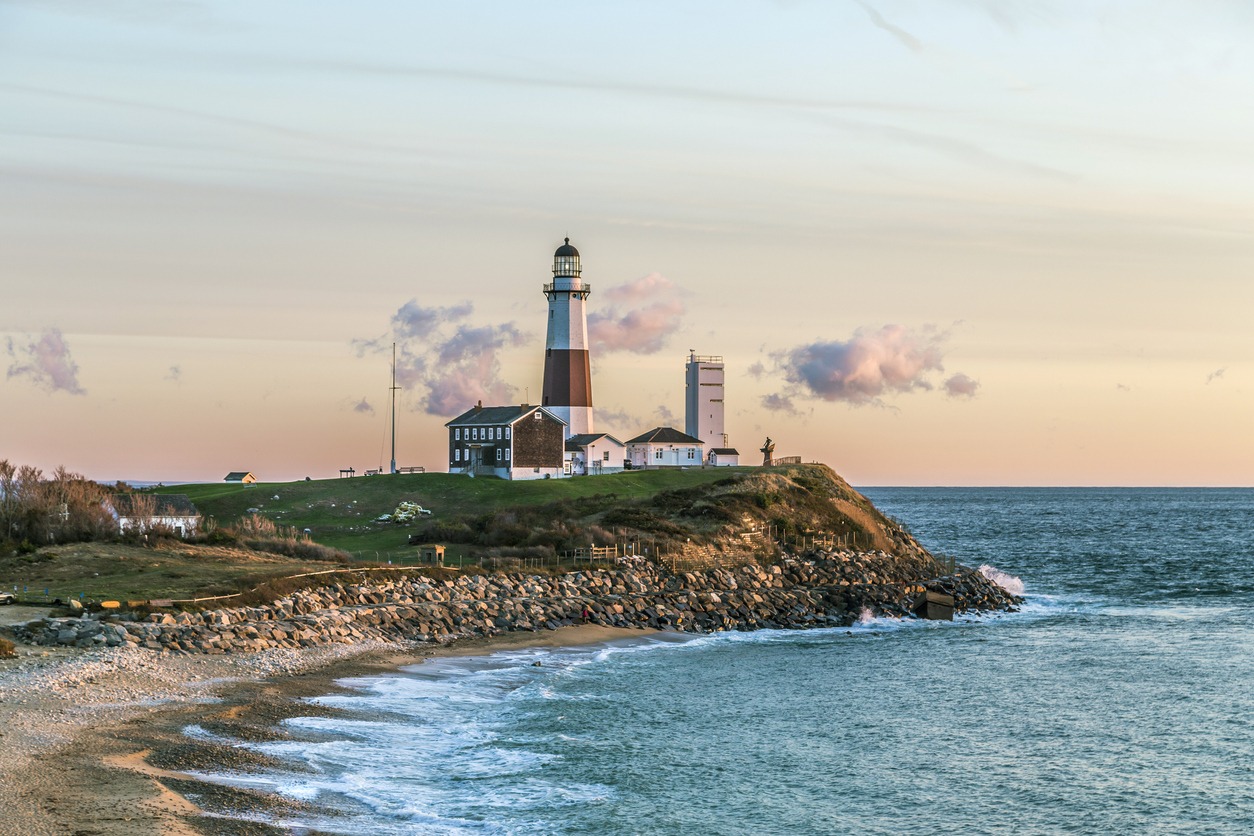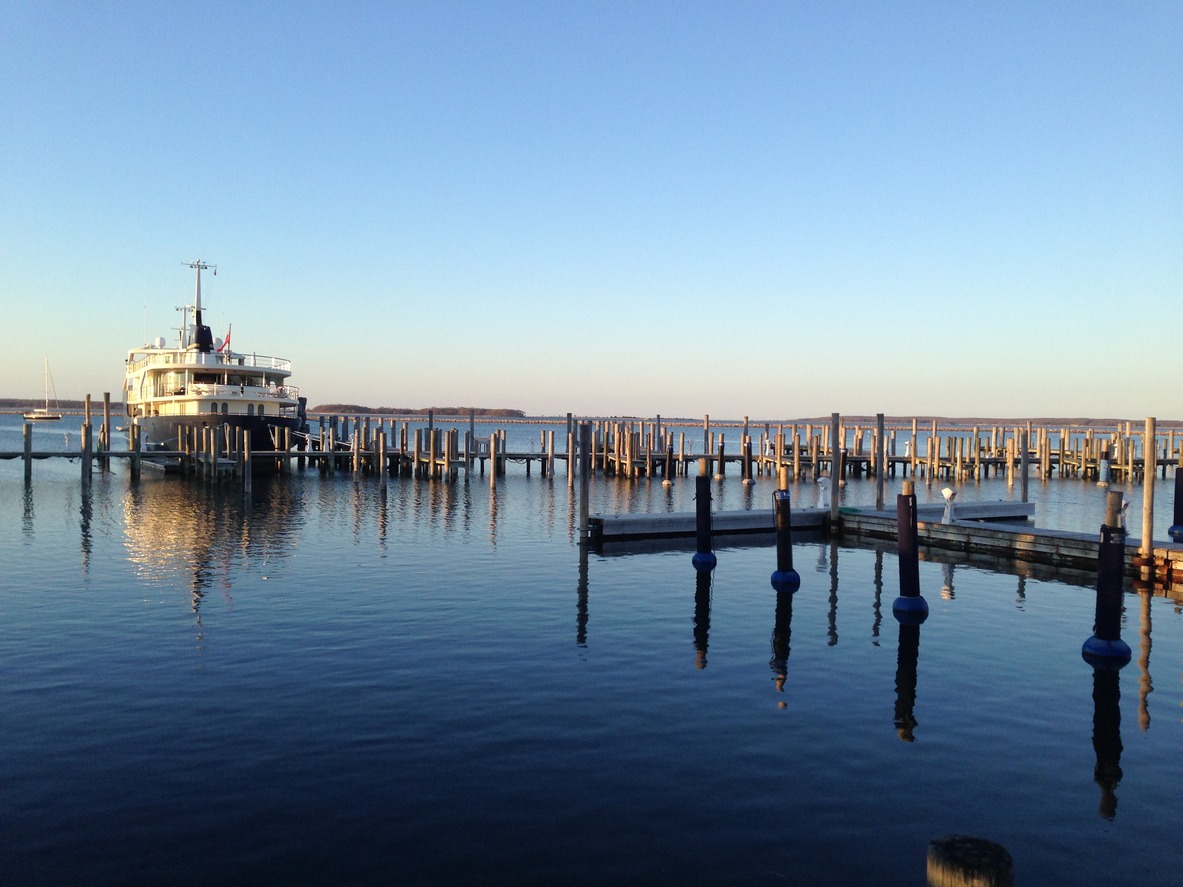The Hamptons is a place in New York that consists of a series of towns, hamlets, and villages located on the east of Long Island. Each town in the Hamptons operates independently — they have a different set of rules for homes, rents, and sometimes even beach tickets. The two towns, Easthampton and Southampton, were founded as farming, fishing, and whaling settlements in the mid-1600s.
The town, founded by the British, began to build a profile for summertime visitors during the start of 1879. Even though the Hamptons are two separate towns with several hamlets, the place was referred to as “The Hamptons” in The New York Times article from 1882 — then, the moniker persisted.
Most notably, the area is a great weekend destination, especially for New York City residents. The Hamptons is famous for having a rural setting and wonderful facilities. The several beaches, the famous Shinnecock Golf Club, and the legendary Hampton Classic horse show are some of the minor attractions that bring tourists from NYC and all over the country and the world.
What Consists of The Hamptons?
The Hamptons are Southampton, Bridgehampton, Watermill, Sag Harbor, Sagaponack, East Hampton, Amagansett, Montauk, Springs, and Wainscott. Based on where you are in the Hamptons, you may see yourself looking over the Atlantic Ocean, the Gardiners Bay, or the Peconic Bay.
Southampton has control over the communities of Southampton, Quogue, Sagaponack, and Sag Harbor (which the town shares between the Town of East Hampton) and Westhampton Beach. However, the actual hamlets of Southampton are Bridgehampton, East Quogue, Hampton Bays, Shinnecock Hills, Water Mill, and Westhampton. Southampton Town comprises the hamlets of Eastport, Speonk, and Remsenburg. However, they are not regarded to be members of the Hamptons.
When compared to Easthampton, Southampton Town is the more laid-back of the two. The west side of the town, including communities like Westhampton and Hampton Bays, attracts many people because of its laid-back atmosphere and reasonably priced housing.
However, as you travel east, property investment becomes substantially more costly. When visitors arrive at Southampton village, they will truly feel the real “The Hamptons” vibe.
The other part of the town is known as East Hampton Town. In this town, life in the Hamptons has a more “extremely wealthy” feel. Jackie Kennedy Onassis, the Former United States of America First Lady, spent most of her summer vacations there. The well-known Maidstone Club, a private country club, is located there.
East Hampton is also known for having stronger restrictions and tighter regulations than Southampton. However, East Hampton Town also provides a more laid-back community of Montauk and Springs.
East Hampton Town encompasses Sag Harbor’s eastern portion, Amagansett, East Hampton Village, Montauk, Springs, and Wainscott.
The History of The Hamptons
Nestled on the eastern end of Long Island, New York, The Hamptons is not just a premier destination for the affluent but also a region with a rich tapestry of history. From its Native American roots to becoming the quintessential summer retreat of America’s elite, The Hamptons’ story is as captivating as its picturesque beaches and luxurious estates.
The Early Days: Indigenous Beginnings and Colonial Settlement
Long before the Hamptons became synonymous with affluence and prestige, it was a land rich in cultural and historical significance, shaped by the lives and traditions of the indigenous people. The area was originally inhabited by Native American tribes, notably the Shinnecock and Montaukett. These tribes were deeply connected to the land, relying on its natural resources for survival. They practiced sustainable fishing, hunting, and farming, living in harmony with the cycles of nature.
In the mid-17th century, the landscape of the Hamptons began to change with the arrival of English colonists. These settlers, primarily from Connecticut, were attracted to the region for its fertile soil and the promise of a prosperous life. They established settlements that would grow into the towns we know today, such as Southampton and East Hampton. Initially, these communities were largely agricultural, with farming and livestock shaping the early economy.
The relationship between the Native Americans and the settlers was complex. Initially marked by cooperation and mutual assistance, it eventually gave way to tensions as land ownership became a contentious issue. The indigenous people, who had a different concept of land use and ownership, found themselves increasingly marginalized as colonial expansion took root.
Despite these growing tensions, the early years of the Hamptons were characterized by a blend of Native American and colonial cultures. This period saw the merging of different ways of life, with the indigenous population imparting knowledge of local land and maritime resources to the settlers. This exchange was crucial for the survival and prosperity of the early colonial settlements.
As the Hamptons moved towards the 19th century, the colonial influence solidified, and the towns began to develop their distinct identities. The agricultural and maritime practices inherited from the Native Americans laid the foundation for what would become a thriving whaling industry, forever altering the economic and social landscape of the region.
In essence, the early days of the Hamptons were marked by a confluence of cultures and a transition from indigenous stewardship to colonial settlement. This period laid the groundwork for the transformation of the Hamptons into the vibrant and diverse region it is today, rich in history and steeped in a complex past that is often overshadowed by its contemporary reputation.
East Hampton: From Maidstone to a Beloved Retreat
Easthampton, one of America’s oldest towns, was established in 1648 by Connecticut farmers and fishermen seeking a better life. Originally named Maidstone, the town was officially renamed East Hampton around 1664. Dominated by Puritans in its early years, East Hampton, like other New England towns, witnessed its own witch trials. Until the twentieth century, life in East Hampton revolved around farming and fishing. This agricultural focus led to unique practices like the annual cattle walk, where farmers drove their cattle along the main roads to areas like Montauk.
The Native American Heritage
The Hamptons was initially inhabited by five Indian tribes: the Montauks, Patchogue, Peconics, Poosepatuck, and Shinnecocks. The Shinnecocks, residing in the Southampton area, were particularly hospitable to new settlers in 1640, offering land in what would become Old Towne. This collaborative relationship saw the Shinnecocks protecting settlers from New England invasions and teaching them agricultural and fishing techniques. This mutual support was pivotal in the development of Southampton.
The Rise of Industry and Tourism
As the 19th century dawned, The Hamptons began to witness a significant transformation in its economic landscape. This era marked the rise of various industries, most notably whaling, which became a cornerstone of the region’s economy, especially in Sag Harbor.
Whaling: The Heartbeat of Sag Harbor’s Economy: The whaling industry in Sag Harbor turned the once-sleepy village into a bustling port, teeming with activity and prosperity. Whalers from The Hamptons embarked on perilous journeys, venturing as far as the Arctic in search of whales. The industry brought wealth and growth, leading to the development of shipbuilding and related industries. Sag Harbor’s wharves were lined with warehouses, cooperages, and processing plants, all supporting the whaling fleet. However, by the mid-19th century, as whale populations dwindled and petroleum was discovered, the industry faced a steep decline.
Agriculture and Other Industries: Parallel to the whaling industry, agriculture continued to be a mainstay in the economic activities of The Hamptons. Farmlands produced a variety of crops, supporting the local communities. Additionally, other industries such as duck farming, shipbuilding, and fishing started gaining prominence, diversifying the region’s economic base.
The Advent of Tourism: The late 19th and early 20th centuries marked a pivotal shift in The Hamptons’ history with the advent of tourism. The completion of the Long Island Rail Road to The Hamptons made the area more accessible, thus attracting New York’s elite. This was the beginning of the transformation of The Hamptons from a primarily industrial and agricultural hub to a coveted summer retreat.
The Birth of a Summer Colony: The natural beauty of The Hamptons, with its pristine beaches and rural charm, appealed to the wealthy seeking a respite from the bustling city life. Luxurious estates and mansions began to spring up, turning the area into a summer colony for the rich and famous. Social events, parties, and recreational activities like golf and tennis became the norm, adding to the allure of The Hamptons as a vacation hotspot.
Cultural and Artistic Flourishing: With the influx of affluent visitors and residents, The Hamptons also experienced a cultural renaissance. Artists and writers were drawn to the area’s serene beauty, leading to the establishment of vibrant artistic communities. Galleries, theaters, and art studios began to emerge, further enhancing the region’s appeal.
The rise of industry and tourism in The Hamptons represents a significant chapter in its history, marking the transition from a working-class community to a playground for the affluent. This period not only reshaped the economic and social fabric of the region but also set the stage for The Hamptons’ current status as a symbol of luxury and a cherished escape from the urban grind.
The 20th Century and Beyond: A Luxurious Getaway: From the early twentieth century, The Hamptons began transforming into a summer haven for the wealthy. The Hamptons’ appeal with its beautiful beaches and charming New England towns continued to draw visitors, including celebrities. East Hampton, known for its historical charm and English windmills, emerged as one of the most beautiful places in the US, a top destination for vacationers from around the world.
The Modern Era: The Hamptons Today
In the contemporary landscape, The Hamptons stands as a symbol of luxury, exclusivity, and the epitome of high-end living. This transformation from its humble beginnings to becoming a premier destination for the world’s elite is a testament to its enduring appeal and adaptability.
The Hub of Affluence and Celebrity: Today, The Hamptons is synonymous with opulence and is frequently associated with celebrities, business tycoons, and the social elite. The region is dotted with grand mansions, sprawling estates, and luxurious retreats that serve as summer homes to some of the most influential figures in society. The Hamptons has become a preferred destination for those seeking privacy and an escape from the public eye, all while indulging in the finest experiences life has to offer.
Real Estate and Architectural Marvels: The Hamptons’ real estate market is one of the most expensive in the United States, characterized by historic homes, modern architectural marvels, and properties that offer breathtaking ocean views and lush landscapes. These homes are more than just residences; they are statements of wealth and style, often featured in architectural digests and lifestyle magazines.
Cultural and Artistic Epicenter: Beyond its reputation for luxury, The Hamptons continues to be a cultural and artistic hub. The region hosts numerous art galleries, exhibitions, and cultural events that attract artists and art enthusiasts from around the world. The Hamptons International Film Festival, for instance, is a notable event that showcases independent films, attracting a global audience and industry professionals.
Gastronomy and Vineyards: The culinary scene in The Hamptons is as diverse as it is exquisite. From high-end restaurants offering gourmet dining experiences to quaint local eateries serving fresh, locally-sourced seafood, the region is a paradise for foodies. Additionally, The Hamptons boasts some of the finest vineyards on the East Coast, offering wine-tasting tours and events that add to its charm as a food and wine destination.
Social Scene and Lifestyle: The social life in The Hamptons is vibrant and exclusive, marked by gala events, charity balls, and high-profile parties. These gatherings are not just social events; they are a showcase of the high life, with fashion, luxury, and networking at their core. The Hamptons also offers a plethora of recreational activities, including golf, yachting, and equestrian sports, catering to the leisurely pursuits of its affluent visitors and residents.
The Hamptons’ history is a fascinating journey from a Native American land to a colonial settlement, then to a whaling hub, and finally to the luxurious destination it is today. Its evolution is a testament to the ever-changing nature of communities and how they adapt to the times while maintaining their unique heritage. Whether it’s the historical architecture, the preserved natural landscapes, or the cultural richness, The Hamptons continues to be a place where history and modernity coexist beautifully.
Life In The Hamptons
Living in The Hamptons is an experience that encapsulates the essence of luxury, culture, and a unique lifestyle that blends the tranquil beauty of the seaside with the sophistication of upscale living. It’s a place where the serene rhythm of the ocean waves meets the lively pulse of high-society events and cultural gatherings.
The Luxurious Lifestyle: Life in The Hamptons is synonymous with luxury. Residents and visitors alike indulge in the finest experiences that life has to offer. From elegant waterfront properties to exclusive country clubs and private beaches, every aspect of life here is about opulence and comfort. The lifestyle is leisurely yet glamorous, with an emphasis on enjoying the finer things in life – be it a sunset yacht cruise or a private wine-tasting session at a local vineyard.
A Socialite’s Paradise: The Hamptons is also known for its vibrant social scene. Summer in The Hamptons is a season filled with high-profile galas, charity events, and exclusive parties. These events are not just about socializing; they are the epitome of the high-society lifestyle, showcasing fashion, art, and philanthropy. The Hamptons attracts a diverse crowd of celebrities, business moguls, and influencers, making it a melting pot of influential personalities.
Cultural and Artistic Hub: Culturally, The Hamptons is a haven for artists and art enthusiasts. The area boasts numerous art galleries, studios, and cultural institutions that host a variety of events, exhibitions, and workshops. The artistic vibe is palpable, with local and visiting artists finding inspiration in the region’s natural beauty and tranquil environment.
Recreational Activities and Outdoor Pursuits: For those who love the outdoors, The Hamptons offers a myriad of activities. The pristine beaches are perfect for sunbathing, swimming, and surfing. Sailing and boating are popular pursuits, with several marinas and yacht clubs dotting the coastline. Golf enthusiasts have access to some of the most scenic and exclusive golf courses in the country. Moreover, the natural landscapes of The Hamptons make it ideal for hiking, bird watching, and nature photography.
Culinary Delights and Local Produce: The culinary scene in The Hamptons is a delightful blend of local produce and gourmet cuisine. The area’s restaurants range from quaint seafood shacks serving fresh catch to upscale dining establishments offering sophisticated culinary creations. Farmers’ markets are a common sight, offering fresh, locally-sourced fruits, vegetables, and artisanal products, reflecting The Hamptons’ commitment to quality and sustainability.
Community and Family Life: Despite its reputation as a playground for the affluent, The Hamptons is also a community-oriented place. Many residents live here year-round, enjoying the quieter off-season months. The Hamptons offers a high quality of life with excellent schools, community events, and a strong sense of local identity. For families, it’s a place that combines the benefits of a close-knit community with the luxuries of an upscale lifestyle.
Life in the Hamptons gives visitors the ideal mix of oceanfront location, agricultural ambiance, historical elegance, and exclusivity while remaining within a short distance from New York City. The area was intended to be a summer town that could offer visitors a respite from the busy life in the city, and it has retained its image even several years later.



